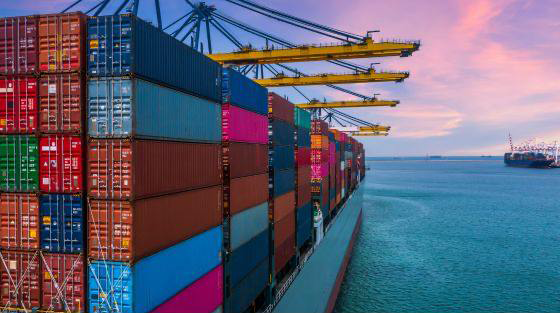This line, overheard from a frustrated logistics manager at a European electronics manufacturer, echoes across shipping floors and warehouse control rooms worldwide. In a decade defined by real-time everything from rideshare arrivals to food delivery updates container-level visibility in global shipping remains frustratingly outdated.
When goods worth millions of dollars vanish into the grey zone between ports and processing centers, the consequences ripple through entire industries. The question is no longer why this happens but why it’s still happening.
A Legacy System in a Real-Time World
The ISO 6346 container number system, introduced in the 1970s, was designed to identify containers, not to track them dynamically. It works well in principle: each container gets a unique number, which is logged at various checkpoints in the shipping process arrival at port, customs clearance, depot transfer.
But between those checkpoints lies a data vacuum.
Modern supply chains are global, multi-modal, and software-driven. Yet most tracking systems still rely on event-based updates entered manually or via limited EDI (Electronic Data Interchange) protocols. These updates are often delayed, incomplete, or missing altogether.
“It’s like using a compass in a GPS world,” says Dr. Elena Nyström, a professor of maritime logistics at Chalmers University of Technology. “The industry has grown around a legacy structure that simply hasn’t kept up.”
The Cost of Invisibility
Lack of visibility doesn't just cause minor delays it cascades through operations, inflating costs and eroding customer trust.
A 2022 study by the International Federation of Freight Forwarders found that 47% of global shippers experienced shipment delays of more than 48 hours due to tracking gaps. In one case, a major pharmaceutical shipment sat unnoticed in a Belgian terminal for five days, jeopardizing temperature-sensitive inventory.
“Every time we have to manually check five different portals just to find out where something is, that’s money lost,” says Lian Zhou, supply chain lead at a German auto parts supplier. “We’re not tracking containers. We’re tracking systems that don’t talk to each other.”
A Maze of Disconnected Platforms
While many carriers and freight companies have invested in digital platforms, they are rarely interoperable. A container might be visible in one portal and completely invisible in another. For logistics teams managing dozens of shipments across continents, this fragmented view is more liability than tool.
TMS (Transportation Management Systems) and ERPs (Enterprise Resource Planning systems) often lack the ability to integrate real-time data streams from multiple providers especially when crossing regions or switching modes of transport.
“You end up with a patchwork,” says Karim Bouchard, product manager at a Canadian logistics SaaS firm. “Your ERP shows what should happen. Your TMS shows what was supposed to happen. And the customer? They’re still asking if their container left the port.”
Tracking Is Not Visibility
It’s important to draw a distinction: having a container number is not the same as having visibility.
True shipment visibility involves:
- Knowing where a container is right now, not 24 hours ago
- Getting alerts when exceptions happen delays, rerouting, customs holds
- Seamless integration with internal systems for automated updates
- Predictive ETAs and dynamic reallocation tools for real-time decisions
Most container tracking tools stop at the first bullet.
Emerging Solutions — and Real-World Fixes
The good news? Logistics technology is catching up and not just in startups.
Companies like Project44, FourKites, and Shippeo have begun aggregating data from ports, carriers, satellites, and IoT devices into unified visibility platforms. Others are building API-driven solutions that plug directly into ERPs and TMS systems.
One success story comes from a global fashion retailer that implemented a hybrid GPS/IoT solution on its high-value shipments between Asia and Europe. Delays dropped by 32%, and customer satisfaction rose after integrating real-time ETAs into their Shopify storefront.
Custom solutions among enterprises with specialized workflows. According to a 2024 report by McKinsey, 68% of large logistics operators are investing in tailored visibility platforms that combine internal data with external APIs.
“Off-the-shelf tools often lack nuance,” says Ingrid Volkov, head of digital logistics at a Baltic shipping cooperative. “For us, the turning point was investing in a system that reflected how we actually operate, not how software thinks we should.”
Human Stakes: What Happens When Visibility Fails
In the summer of 2023, a Norwegian seafood exporter lost a seven-figure contract with a French grocery chain. The reason? A container of chilled salmon was delayed at a German port for 72 hours and no one caught it in time.
The shipment arrived, but the relationship didn’t survive.
“When you don’t know where your product is, you can’t promise anything,” says the company’s export manager, who spoke under condition of anonymity. “And if you can’t promise, you can’t compete.”
The Road Forward
Fixing container tracking isn’t just about hardware or data. It’s about building systems that reflect how modern logistics truly works across borders, across platforms, and across expectations.
That means:
- Abandoning reliance on legacy EDI-only updates
- Demanding APIs from carriers and freight platforms
- Investing in flexible, modular visibility layers
- Empowering logistics teams to act, not just observe
And perhaps most importantly it means recognizing that in a world of real-time everything, knowing where your cargo was yesterday is no longer enough.
That’s why WebMagic helps logistics teams go further with custom solutions that eliminate blind spots, streamline systems, and automate workflows.
From fragmented data to full control it’s not just visibility. It’s logistics intelligence.
